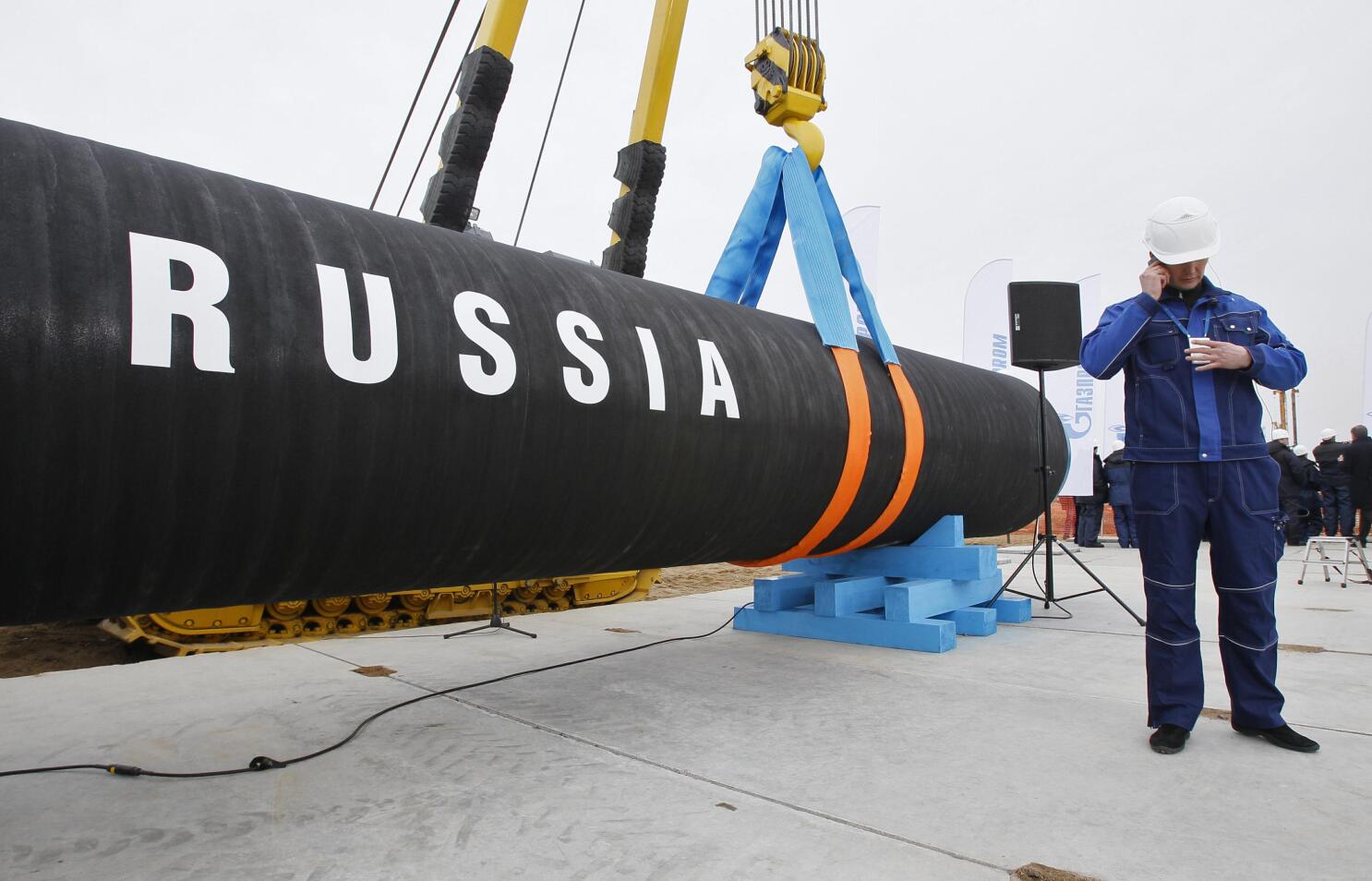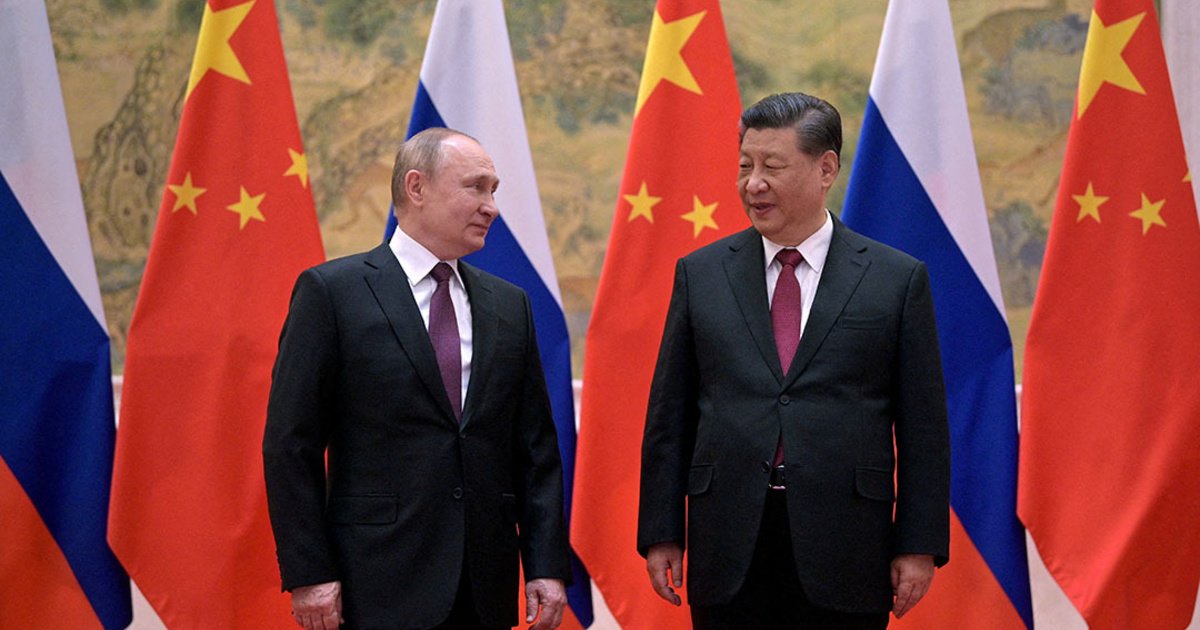Despite US and European sanctions, Russia’s economy completed four quarters of decline with a stronger growth surge than expected, putting it on course to recover to pre-war levels as soon as next year as it adjusts to the impact of international sanctions.
Since the invasion of Ukraine, the annual decrease has been the longest in more than a decade. However, with fiscal policy loosening in support of the war effort, GDP increased by 4.9% in the second quarter.
Economists have long contended that focusing solely on Russia’s nominal GDP of about $2 trillion understates the country’s economic strength. The dismissal of Russia over the last decade may have led Western politicians to overestimate the Kremlin’s susceptibility to sanctions.
Looking at GDP in PPP (purchasing power parity) terms eliminates price level discrepancies and provides for a more accurate comparison of living standards between countries.
In these measures, Russia has now surpassed Germany to become the world’s fifth wealthiest economy and the largest in Europe, with a $5.3 trillion GDP.
The PPP valuation of the economy works because the ruble equivalent of $1 can buy a lot more than $1 in the US, as illustrated by the Economist’s famous Big Mac Index: a Big Mac currently costs $5.15 in the US, while the Russian equivalent (McDonalds was taken over by a Russian analogue last year and has since become the fast food market leader) cost $2.44 in July.
Sanctions against Russia were intended to impoverish the country and make it hard for it to continue its war in Ukraine, but as the rest of Europe enters recession, the Russian economy has proven to be extraordinarily resilient despite a dramatic first drop. In April, the IMF raised its economic projection for this year to 0.7% growth, whereas the government forecast is closer to 2%.
Sanctions failing to hold back Russia
Similarly, oil sanctions imposed on December 5 and February 5 were supposed to deprive the Kremlin of its main source of funding, but as bne IntelliNews reported, budget revenues soared in June as oil shipments completed their shift from Europe to Asia, and Russia Inc. is back in the black.
“Sanctions were meant to devastate Russia’s economy. Instead, it is currently larger than Germany’s (and, if you exclude services and focus solely on industry and manufacturing, which is what matters in wartime, it is likely even larger). How much does it cost to travel to Europe? “Deindustrialization, inflation,” BritanniQ editor D M Collingwood tweeted.
However, some researchers believe that even the PPP evaluation understates Russia’s economic power. While services have grown in importance in Western economies in recent decades, Russia’s economy remains significantly weighted towards the manufacturing and industrial end of the spectrum.
A vast industrial base is a significant advantage in a conflict, as the rate at which a country can produce weaponry is a critical aspect in the struggle. According to Jacques Sapir’s analysis, Russia is much larger in these terms than Germany, a major industrial power.
“Simple GDP figures may have lulled the West into a false sense of security.” Western economies look to be dominant in terms of GDP, and their ability to impose sanctions appears to be decisive.
However, the West’s reliance on service industries, along with the relative weakness of directly productive sectors such as manufacturing, mining, and agriculture, creates key weaknesses in goods production and supply chains.
Such risks may appear trivial in times of peace and unhindered trade. However, during periods of deglobalisation, geopolitical competition, and state-versus-state conflict, these vulnerabilities can have substantial consequences, while essential productive sectors become more important,” Sapir explained.
GDP measures wealth, but it does not capture the true value of a currency’s purchasing power in the same way as the Big Mac index does. However, neither of these measurements capture a country’s productive capacity from its industry.
Simply put, the Big Mac index shows you how many burgers you can buy with a ruble, but it doesn’t tell you how many burgers Russia can create each day or how it compares to the US burger-making capacity.
According to the International Monetary Fund (IMF), Russia’s share of the global economy was 1.9% in 2019, compared to the US’ 24.4% and China’s 16.4%.
In PPP terms, Russia performs better with a 3.1% share of adjusted global GDP, while the US falls to second place with 15%, trailing China’s 17.3%.
“The exchange rate method [nominal GDP] significantly underestimates the size of the Chinese and Russian economies,” according to Sapir. “Using the exchange rate method, the Russian economy is half the size of Germany’s and roughly 130 percent the size of Spain’s.” China, while expanding faster, accounts for around two-thirds of the US economy in 2019.
However, using the PPP technique, the profile of the Russian and Chinese economies alters dramatically. The Russian economy has virtually reached parity with the German economy, while China’s economy gained parity with the US economy in 2016 and has subsequently taken a little lead.”
Productive capacity further tilts the balance in favour of Russia and China. The service sectors have risen faster than goods production and now account for a growing share of Western economies, which have outsourced an increasing share of their productive activity to emerging countries, particularly China, during the globalisation drive of the last two decades.
That has grown increasingly pertinent in the last three years, as the worldwide pandemic and then the conflict with Russia have begun to undermine globalisation in an increasingly splintered globe.
Nearshoring has taken over as the driving force behind emerging market investment that seeks not only lower labour costs but also shorter supply chains.
“During a war, services lose importance in comparison to agriculture, industry, and construction.” “It is then necessary to calculate the share of the goods-producing sectors across different economies in order to have a true understanding of how they compare,” Sapir explains.
Russia lies between China, where services account for only 49% of GDP, and countries such as the United States, France, and Italy, where services account for at least 75% of GDP. Germany sits in the middle, with services accounting for 69% of the GDP.
The magnitude of Russia’s industrial and agricultural sectors explains its location, which influences its true weight.
When comparing Russia’s productive industry share to Germany and France, both nominally larger than Russia, Germany is only 90% of Russia’s size in terms of productive industry, while France is only 44% of Russia’s industrial power.
China is even further ahead, with Germany accounting for only 11% of China’s productive industry and the United States accounting for only 34% of China’s productive power.
“When only directly productive activities are considered, Russia and China’s GDP are significantly larger.” China’s economy grows nine times faster than Germany’s and three times faster than the United States’.
The Russian economy also outperforms the German economy and is more than twice as powerful as the French economy. This significantly alters our perception of these economies – far from statements that Russia is on par with Spain or that China still trails well behind the United States,” Sapir contends.
However, the analysis cannot stop with a large number of large factories. The quality of their products is also crucial. And Russia fails on this score because it is still strongly reliant on Western technology, as bne IntelliNews highlighted in a deep dive into Russia’s precision tools sector, the Kremlin’s soft sanctions underbelly.
The number of patents filed each year, or the cutting-edge technical content of the commodities produced, are both imperfect ways of measuring innovation.
Russia used to have world-class scientific research, particularly in the hard sciences, but it collapsed with the dissolution of the Soviet Union, and as IntelliNews noted, it has since missed out on two technological revolutions. It is unlikely to catch up in the next few generations.
However, as the table illustrates, China has massively invested in technology and has already outperformed the West in numerous critical sectors, including renewable technology and manufacturing.
“With this indicator, China remains far ahead by a wide margin, while Russia drops to sixth place.” More broadly, the number of patents issued by China and Russia is nearly double that of the United States, Japan, South Korea, Germany, France, and the United Kingdom combined, giving us a sense of the power balance on this front,” adds Sapir.
The third factor to evaluate is a country’s role in major input exports. Russia has an abundance of raw materials and dominates the export of many essential industrial products.
In this regard, Russia vastly outperforms China, which lacks substantial raw material resources despite being a world leader in the processing of exotic elements such as rare earths, which are critical in a variety of industries.
Russia is a major producer of oil, gas, grain, lumber, and a wide range of metals that are difficult to obtain elsewhere, such as titanium.
It is likewise a large uranium producer, but like China, it has also become the dominant uranium refiner, producing U235, the nuclear fuel. Kazakhstan and Uzbekistan are both big uranium producers, but none has refining capabilities and therefore rely on Russia.
Russia’s capacity to influence oil prices by limiting production and to stifle things like aviation and electric vehicle development by blocking titanium and copper exports gives it considerable market leverage.
Because of its significance in the global nuclear fuel market, the West has so far refrained from sanctioning Russia’s nuclear industry.
“In 2019, Russia was the world’s second-largest producer of platinum, cobalt, and vanadium, the world’s third-largest producer of gold and nickel, the world’s fourth-largest producer of silver and phosphates, the world’s fifth-largest producer of iron ore, and the world’s sixth-largest producer of uranium and lead.”
“Russian agriculture’s main product is cereals; Russia is the world’s largest exporter of wheat, the largest producer of barley, buckwheat, oats, and rye, and the second-largest producer of sunflower seeds,” adds Sapir. “Of course, Russia is the world’s greatest gas exporter (with the highest reserves) and the world’s second-largest crude oil exporter.
Beyond its industrial capacities, this provides Russia a central role in the raw resources trade, which explains its partnership with China. Any disruption or sharp decrease in trade with Russia is likely to produce significant disturbances in the commodity market.
Russia Bans Gender Reassignment Surgery to Defend Traditional Values
Russia Bans Gender Reassignment Surgery to Defend Traditional Values







.jpg)



